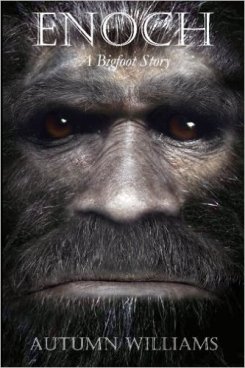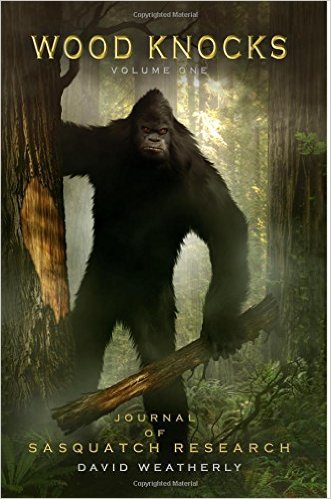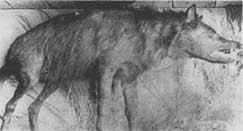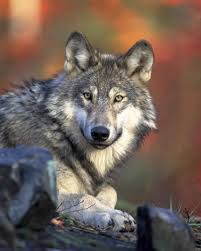
I really considered giving this blog another title but, in the end, I decided I could not. This is a post about the book by Autumn Williams and my thoughts on what she and her witness “Mike” had to say but I want to state, up front, that this is not a review. This book was written back in 2010 so some of the information in it may be outdated but I do not think that what I gleaned from the work will be effected by the age of the book.
First of all, I want to offer belated congratulations to Ms. Williams for what is a very well written first book. She does an excellent job of blending her internal dialogue and struggle with the stories and opinions that “Mike” is sharing with her and I think that she handles the narrative like a professional journalist. I had just completed Jon Krakauer’s Into Thin Air previous to reading Enoch: A Bigfoot Story and I think the two compare favorably.
That is as close to a review as I will get though. Anyone who has been reading the blog for a while knows that I am of the opinion that Sasquatch is not a native of this particular plane of reality. Looking back at the archives, there are so many articles with bits and pieces of my thinking on Sasquatch that I can not cite just one that outlines my feelings on the matter. I think that, given some of the witness reports, at least some of the giant creatures that are being seen out there are more on the paranormal end of the spectrum. “Flesh and blood” creatures do not disappear in a flash of light when shot at, for example.
Regardless of my opinion though, I read Ms. Williams and Mike’s words with great interest. It is quite obvious to me that Mike is either the mother of all tale tellers, weaving a story so complex that I, a fiction writer of sizable novels, would need Evernote to keep track of what happened when, or he has had an ongoing set of experiences with something.
Is his interaction necessarily with a giant ape / relict hominid? No. I could very easily make the case that Mike has stumbled on or close to a portal to the Otherworld and he is dealing with manifested creatures from that realm. There is no reason why a Sasquatch in entering our realm could not bat Mike into the swamp and Mike’s behavior : leaving food offerings, being, for the most part, very deferential of Enoch and others of his kind, not overstaying his welcome, developing a loving friendship with the being and a willingness to go into a really wild place to interact with the being(s) could just as easily describe the life of a Faerie Seer as it could a Sasquatch witness.
Long story short, though, whether he was interacting with a giant ape, a relict hominid or some species from the Other Side, his experiences are valid and instructive. Ms. Williams’ small appendix at the back of the book giving advice to people who think they might have Sasquatches on their land could be a primer for people seeking to interact with the spirits of their land but that is not really the point I wanted to make in this blog.
I have taken the spirit view of Sasquatch for some time but I have always said, too, that I am willing to be surprised. What I found most pleasant about this book was the repeated advice from the author to would-be witnesses not to chase these creatures. I have said on more than one occasion, and Ms. Williams supports this on almost every page of her book, that the person most likely to view a Sasquatch is going to be living like a Sasquatch. Why do you suppose that hunters seem to see these creatures all the time? Because witness testimony seems to indicate that the Hairy Ones are hunters. If I am looking for deer and the Sasquatch is looking for deer then chances of our paths crossing increase exponentially.
Mike, of course, really did create the perfect storm of opportunity to see and interact with one of these creatures. He basically plopped himself down in a swamp and stayed there for long periods of time, not running around hooting and hollering and banging on trees, but simply living. As he and Ms. Williams both note, his temperament was such that extended separation from humans did not bother him and it shows in the way that he took himself out to camp and simply stayed.
Once he learned his lesson about technology and the Sasquatch, he also quit trying to film the creature and simply relaxed and enjoyed his company. I agree with Ms. Williams wholeheartedly that all the tech in the world is not going to ‘prove’ that Sasquatch exists. Nothing, short of a body is going to ‘prove’ to the scientists and other skeptics that these creatures are real and such a scenario would be a nightmare for the creatures and for the human who brought the creature in (not that I think that a human with a gun could manage it).
In Native cultures, the Hairy One may be scary monsters used to keep children in camp but they may, just as easily, be seen as guardians of the woods. The First Nations folks see these beings as a separate people, a spiritual people, in much the same way that Europeans, a little more than a century ago, understood the Faery to be a people who lived side by side with them and sometimes interacted with them (and even interbred with them – try that without some sort of physical interface). In Iceland, to this day, there is tremendous respect for the elves who are believed to live in stones and other natural features of the land. There is a common theme here; it is a theme of relationship.
As I said earlier, the Celts and other European peoples, not so long ago, behaved toward the “Little People” much the same way that Mike behaved toward Enoch. They offered food on a regular basis, spoke about them with respect (and obliquely so as not to draw too much attention), interacted with them when given the chance but always kept in mind that these were a strange and powerful people that you did not want to anger.
I have hammered at the idea of respectful interaction with spirits in these pages and I would like to take this opportunity to extend my urgings to the creature known as Sasquatch. Folks, I do not care whether the Hairy One is a giant ape, a relict hominid, a spiritual creature or some combination of the above or none of the above, interacting with such a being would be a sheer privilege and that privilege should be treated as such and not squandered in the provision of some concept of ‘proof’.







